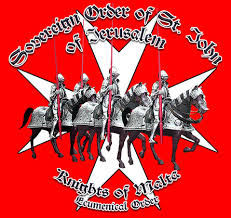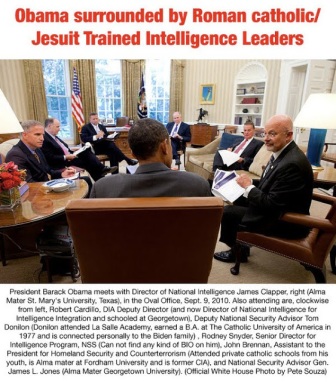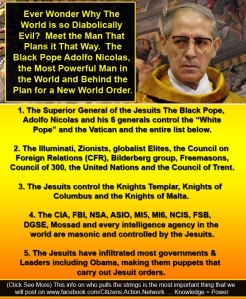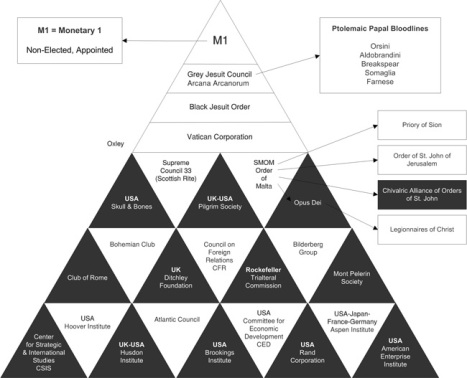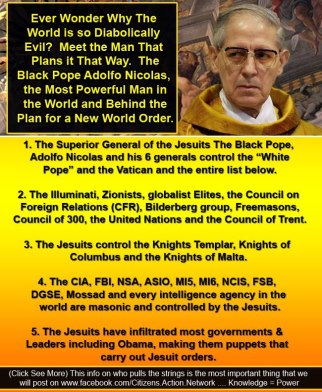Jesuits were often highly trained in languages and the sciences and were expected to use their technical knowledge, especially in the realm of astronomy, to win over rulers and elites around the world and convince them, by extension, of the superiority of the Catholic message.
By 1750, 30 of the world’s 130 astronomical observatories were run by Jesuit astronomers and 35 lunar craters have been named to honor Jesuit scientists.
When Flat Round Earth Got Dropped from Scientific Inquiry
Up until the Jesuit Order was created in 1540, the most common school of thought in regards to Cosmology was that the Earth was Flat and Round, as had been the teachings for 5,000 years.
Once the Jesuits gained power around the world, the instilled the global ball Earth theory called Heliocentrism, step by step by step until after just a few generations, everyone on Earth KNEW the Earth was traveling around the Sun at incredible speeds.
It began with changing the conversation from one of a Flat Earth and Geocentered to just a debate as to whether we spun around the Sun or the Sun moved around us, completely eliminating the entire Flat Earth theory.
Flat Earth theory is never brought up in history lessons, or astronomy classes or by any supossed learned institutions. In fact, it wasn’t until one year ago when “Flat Earth Conspiracy” by Eric Dubay was introduced to the public.
Over the past 150 years several courageous Men and Women tried to educate the masses to the great fraud perp’d so expertly, over so long, by the Jesuits, yet know the cat is out of the bag and the truth is available for all to learn.
Here is a chronology of how Jesuits have been involved in every step of the way of deceiving all to believe we are just a small tiny insignificant blip in a massive universe vis-a-vis a Earth centered Universe where we are the Biggest Show in the Universe and of most importance.

Geocentrism vs. Heliocentrism and no longer discussion of Flat Earth Theory
In 1543, Copernicus suggested the sun was at the center of the cosmos.
When Jesuit astronomer, Giovanni Battista Riccioli published his Almagestrum Novum or “New Almagest” the title alone suggested the boldness of the project. This was to be a new and updated take on Ptolemy’s Almagest. The book offered new insight into the state of thought about the cosmos in 17th century Europe.
The frontispiece to Riccioli’s Almagestrum Novum tells his perspective on the state of astronomy in 1651. Urania, the winged muse of astronomy, holds up a scale with two competing models, a sun centered Copernican model, and the Tychonic geocentric model. The Ptolemaic model sits discarded in the bottom right corner of the scene. On the right, 100 eyed Argus points at cherubs in the upper right corner of the illustration.
The Cherubs hold recent observational discoveries; the moons of Jupiter, a detailed mountainous moon and the rings of Saturn. Under God’s hand from the top of the image, the scale reports the Tychonic model to be heavier and thus the winner.
Early Channeling Sagan: Billions and Billions
Some of the most interesting details in this illustration are tucked away in the corners. In the upper right corner, among the clouds, are small representations of additional solar systems. Beyond the central diagram, the mapmaker shows the concept of the plurality of worlds. Each of these little sets of circles represents its own solar system with a star and planets. This image directly draws on the literary author, de Fontenelle, who building on the ideas of Newton and Descartes’, explored the significance of living in a universe with a plurality of worlds each orbiting their own stars.
Riccioli leans on the authority of a number of contemporary and historical thinkers. He lists 38 different astronomers and thinkers, such as Aristotle, Ptolemy and others who believe the Earth to be the center of the universe. He compares them to the 16 astronomers, including Copernicus, Kepler, and Descartes, who favor a sun centered model.
1600’s
There were three mathematical models to describe the movements of the heavens in 163
- The Aristotelian / Ptolemaic system, with everything orbiting around a stationary Earth, which had largely fallen out of favour following Galileo’s observations.
- The Tychonic system (developed by Tycho Brahe), in which the Earth was viewed as stationary, the Sun went around the Earth and everything else went around the Sun. After Galileo’s presentations in 1611, this became the favoured model of the Roman Catholic Church. Most Jesuit astronomers (such as Clavius) had adopted this system by 1620.
- The Copernican system, with a stationary Sun around which everything else revolved.
***
A statue of Nicolaus Copernicus erected 1973, 500 years after his birthday in front of the Jesuit college and a planetarium in Piotrkow Trybunalski, …
Copernicus
Among Catholics, Christoph Clavius (1537–1612) was the leading astronomer in the sixteenth century. A Jesuit himself, he incorporated astronomy into the Jesuit curriculum and was the principal scholar behind the creation of the Gregorian calendar. Like the Wittenberg astronomers, Clavius adopted Copernican mathematical models when he felt them superior, but he believed that Ptolemy’s cosmology — both his ordering of the planets and his use of the equant — was correct.
Pope Clement VII (r. 1523–1534) had reacted favorably to a talk about Copernicus’s theories, rewarding the speaker with a rare manuscript. There is no indication of how Pope Paul III, to whom On the Revolutions was dedicated reacted; however, a trusted advisor, Bartolomeo Spina of Pisa (1474–1546) intended to condemn it but fell ill and died before his plan was carried out (see Rosen, 1975). Thus, in 1600 there was no official Catholic position on the Copernican system, and it was certainly not a heresy.
*****

Tycho Brahe
Tycho Brahe, 14 December 1546 – 24 October 1601), was a Danish nobleman known for his accurate and comprehensive astronomical and planetary observations.
After disagreements with the new Danish king Christian IV in 1597, he was invited by the Bohemian king and Holy Roman emperor Rudolph II to Prague, where he became the official imperial astronomer. He built the new observatory at Benátky nad Jizerou. There, from 1600 until his death in 1601, he was assisted by Johannes Kepler who later used Tycho’s astronomical data to develop his three laws of planetary motion.
Some acceptance of the Tychonic system persisted through the 17th century and in places until the early 18th century; it was supported (after a 1633 decree about the Copernican controversy) by “a flood of pro-Tycho literature” of Jesuit origin.
Among pro-Tycho Jesuits, Ignace Pardies declared in 1691 that it was still the commonly accepted system, and Francesco Blanchinus reiterated that as late as 1728.[82] Persistence of the Tychonic system, especially in Catholic countries, has been attributed to its satisfaction of a need (relative to Catholic doctrine) for “a safe synthesis of ancient and modern”.
****
“The laws of nature are written by the hand of God in the language of mathematics.” – Galileo Galilei (Il Saggiatore, 1623)
Initially a beneficiary of church patronage of astronomy, Galileo rose to prominence with the publication of Sidereus Nuncius, which comprised astronomical observations made possible by the 1608 invention of the telescope. He was feted in Rome, honoured by the Jesuits of the Roman College and received by Pope Paul V and church dignitaries
In 1611 Galileo travelled to Rome to present his findings, and was greeted with great acclaim. He demonstrated his observations of Jupiter to Christopher Clavius, a Jesuit at the Collegio Romano and the most respected astronomer in Europe at the time, who confirmed Galileo’s observations and parts of his theses of planetary motion. He was monumentally arrogant, belligerent and abrasive towards any who opposed him.
Controversial Questions’ (don’t you just love that title?), wrote a letter to Galileo in April 1615 outlining the Church’s official position. He pointed out that Copernican theory was perfectly acceptable as a working hypothesis, and if there were proof that the earth circles around the sun, “then we should have to proceed with great circumspection in explaining passages of Scripture which appear to teach the contrary.”
Galileo had no astronomical proof to offer, partly because his own observations did not align properly with his theory. Instead, Galileo proposed as proof a flawed and unconvincing theory that the tides were evidence of the Earth’s rotation (and, incidentally, specifically denying that lunar attraction was involved). In 1616 the Church ordered him to cease and desist his public advocacy of the unproven theory.
n 1623 his friend and supporter Maffeo Barberini ascended to the papacy, and Galileo confidently re-entered the public fray. In the same year he published Il Saggiatore (‘The Assayer’), in which he launched a vicious assault on a treatise on comets by Orazio Grassi, a Jesuit mathematician at the Collegio Romano. Grassi used observations of parallax to argue that comets are further away than the moon; Galileo ridiculed this idea and claimed instead that comets are an optical illusion. His factual error notwithstanding, the harshness of Galileo’s tone permanently soured his relations with the Jesuit order. Pope Urban VIII thoroughly enjoyed the rhetorical flourishes of Galileo’s prose, however, and composed a poem in his honour.
The Jesuits at the Roman College undoubtedly followed Aristotle in philosophy and Ptolemy in astronomy, at least for didactic purposes.
Continue reading Chronology of 500 Year Jesuit Deception and Flat Earth →



















 Chinese children read books with special desks equipped with iron bars to help them protect their eyesight. Photo: ChinaFotoPress
Chinese children read books with special desks equipped with iron bars to help them protect their eyesight. Photo: ChinaFotoPress




